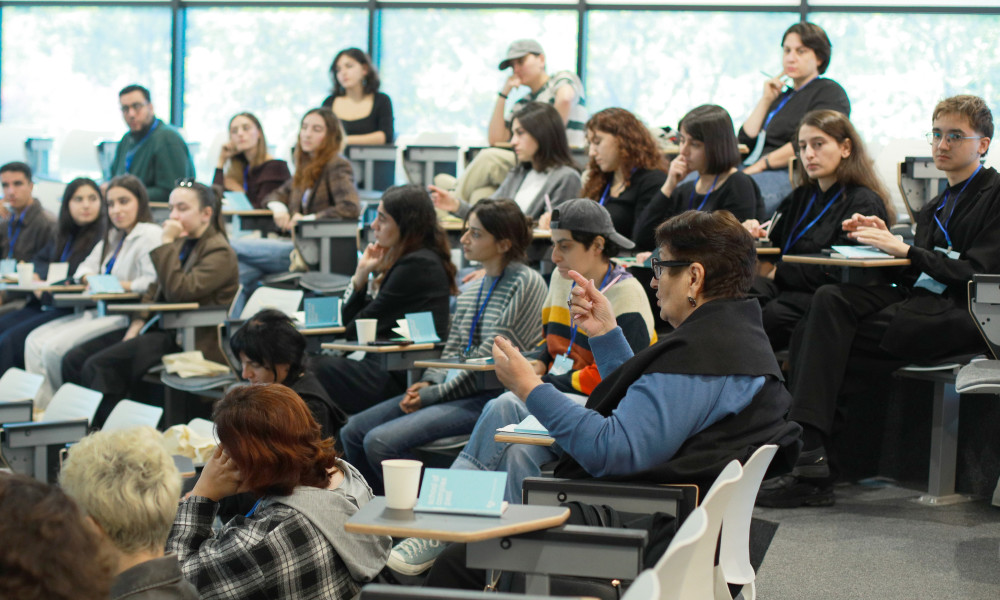How are environmental transformations reshaping our cultures and societies, and what new ways can we find to address these challenges?
These were the questions which were addressed during CSN Lab’s annual alternative education program of School of Complex Past.
This year, CSN Lab’s School of Complex Past turned its attention to one of the most pressing global issues of our time: environmental change. As the world faces unprecedented ecological crises – from climate change, mass deforestation and soil degradation to polluted rivers and urban air thickened by waste burning and unregulated construction – Armenia is no exception. Yet there remains a widespread misconception that environmental issues concern only small communities of ecologists or activists. The broader discourse on their social and cultural implications still remains in the margins, calling for a more in-depth and layered understanding.
Positioned at the intersection of cultural rights advocacy, multidisciplinary research, artistic practice, and alternative education, CSN Lab continues to explore how culture can serve as a site of resistance. The 2025 School of Complex Past became an interdisciplinary platform for thinking on these topics.
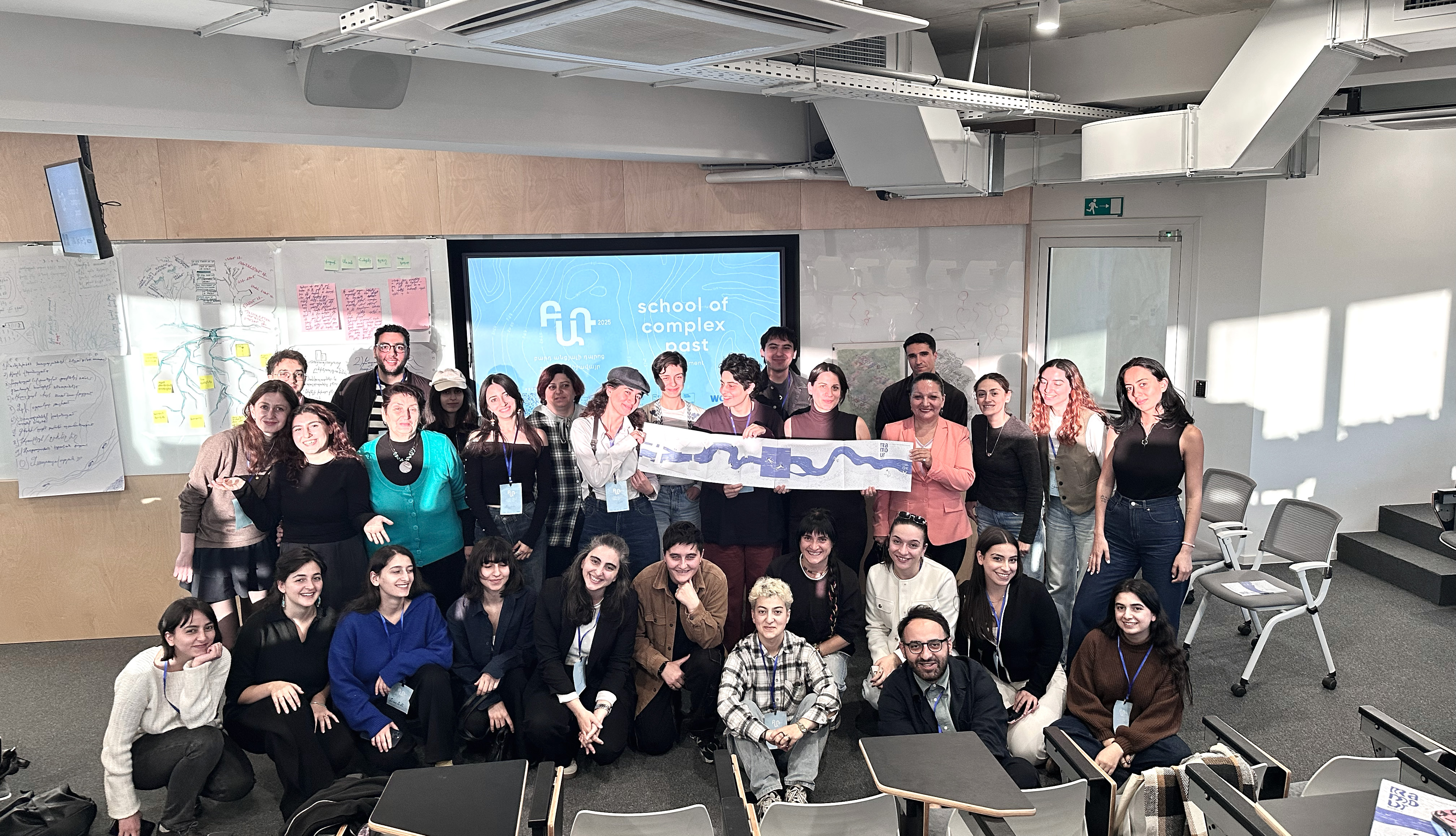
These three days of intensive program held on October 17-19, included a wide range of formats to explore foundational environmental topics such as nature’s rights, colonisation of landscapes, infrastructural development and their legacies, mining, degradation of water spaces, environmental activism and more. The sessions combined lectures, artistic talks, and collaborative workshops, weaving together Armenian, regional and international perspectives.
The community of learners of this year’s school was also very diverse. The program combined individuals from different regions in Armenia and from different fields; researchers, cultural practitioners, activists, journalists, ecologists, economists, architects and students. This intergenerational and interdisciplinary mix fostered a dynamic environment for dialogue, where personal narratives met theoretical reflection – with each participant contributing a unique perspective shaped by their experience and worldview.
The school opened with welcoming remarks by CSN Lab’s founder, Tigran Amiryan, who particularly emphasised the necessity of involving the cultural field in environmental processes. He underlined that environmental disasters of pollution, biodiversity loss, and climate injustice are not merely factual occurrences; they expose how our communities perceive and position themselves in relation to nature. Culture and memory as essential spaces where these relations are shaped and contested, where narratives of care, loss, and responsibility toward the environment are continuously produced and reimagined.As a result, working with memory and cultural studies becomes particularly crucial in the context of climate justice.
The introductory part of the school continued with ecologist Mari Chakryan, who presented the environmental issues of Armenia and the region, tracing their roots particularly through the lens of Soviet and post-Soviet environmental policies. Tigran Amiryan and Mari Chakryan concluded their talk with a call to recognise the rights of nature, not only as a legal or scientific concept but also as a cultural and social responsibility.
Beginning with the presentations of new projects – Tigran Amiryan and Arsen Abrahamyan presented CSN Lab’s ongoing research project titled Blue Yerevan, which examines the transformation and degradation of Yerevan’s water infrastructures. Their analysis revealed how the city’s once-vital water networks, its rivers, canals, and basins, have been reshaped or disappeared over time due to rapid urbanisation and negligent governance. Arsen Abrahamyan also introduced the research project “Kond: A Natural History of Networked Architecture,” which explores how the structure of the Kond neighbourhood reflects the multilayered interrelations between natural landscape, architecture, and community.
Continuing the discussion on the topic of water, artist Harutyun Tumaghyan, spoke about the intersections of environment and art. Presenting his animation project Sevanik, Tumaghyan discussed how art can become an influential medium for shaping ecological awareness, particularly highlighting the role of children’s literature in advancing environmental education and consciousness.
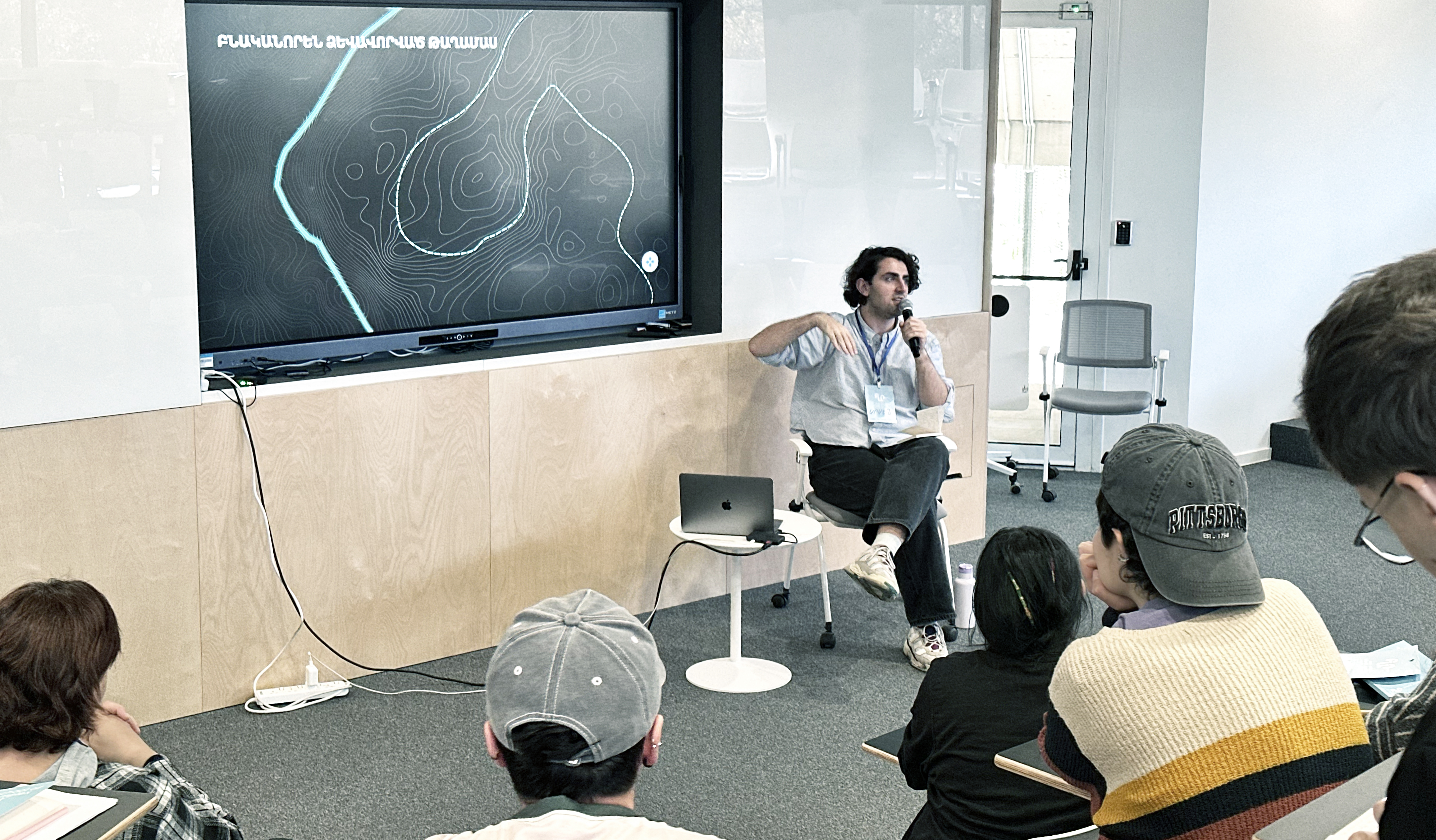
At the same time, grounded in Armenia’s environmental context, the school also created a space for regional and international perspectives. Damla Barın, a sociologist and representative of the Hrant Dink Foundation, presented KarDes, a project documenting Istanbul’s urban and water heritage, where she discussed the city’s historical transformations and pointed to the current challenges surrounding the preservation and accessibility of its water systems. Continuing the thematic focus on environmental justice and the rights of nature, artist and researcher Olivier Pestiaux from Belgium presented SAMBRE2030, a large-scale project dedicated to studying and sustainably reorganizing the Sambre River. The initiative aims to grant legal status to the Sambre River, which flows through Belgium and France, thereby recognising it as a subject endowed with its own rights.
The discussions on environmental justice were continued by interdisciplinary researcher Daria Tsymbalyuk, who delivered a lecture on the ongoing ecocide in Ukraine, examining the impacts of Russia’s military actions on Ukraine’s natural environment. She also reflected on Soviet-era policies, particularly on the mechanisms of resource exploitation applied to Ukraine’s natural landscape.
The theme of Soviet legacy and the post-Soviet challenges rooted in that legacy was further developed in the lecture by anthropologist Eviya Hovhannisyan, who shed light on the processes of infrastructure formation and governance policies during the Soviet period. Hovhannisyan’s observations highlighted the profound ecological and social consequences of Soviet colonial modernisation, situating them within a broader framework that interconnects questions of development, migration, and environmental justice.
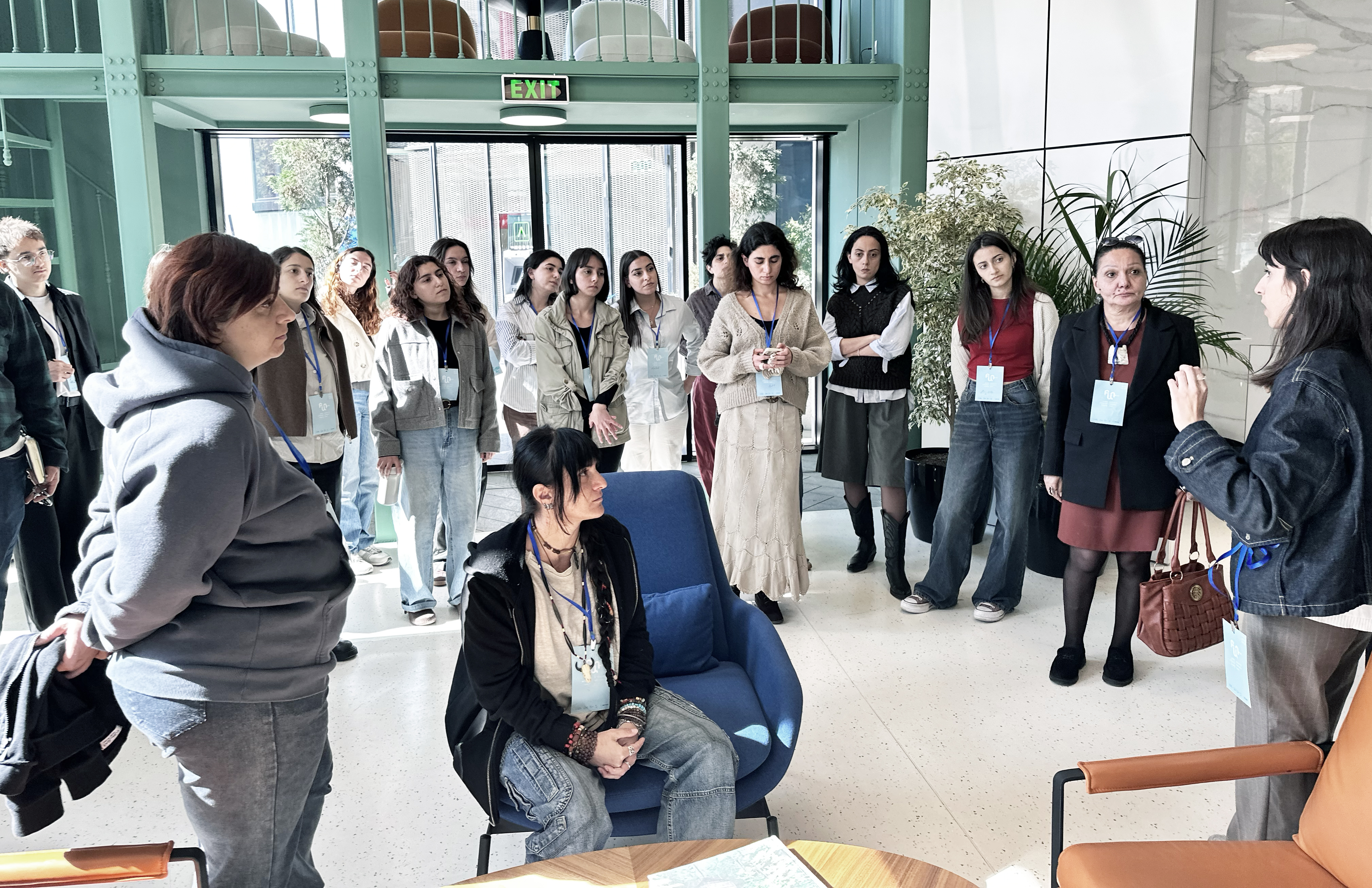
Movements emerging around environmental issues hold exceptional importance. For this reason, the School of Complex Past could not but include in its program discussions on the role and transformations of eco-activism.
Within the series of lectures dedicated to the study of eco-activism in Armenia, sociologist Arpi Manousyan analysed the political and social dimensions of environmental movements, tracing their formation within the context of the independence movement of the 1990s. Highlighting the deep interconnection between these movements and processes of civic self-determination and later, the depoliticisation of Armenian eco-activism in public discourse, Manousyan’s analysis demonstrated how this separation limited the transformative potential of environmental movements by overshadowing their connection to questions of democracy and governance.
The discussion continued with eco-activist Ani Khachatryan, who spoke from her personal experience, particularly within the environmental initiatives and struggles for the protection of Teghut, Trchkan Waterfall, Mashtots Park, and Amulsar. Her talk emphasised the necessity of sustaining eco-activism and ensuring community participation in Armenia despite ongoing political and economic pressures.
The School of Complex Past: Environment program concluded with a series of project presentations offering feminist perspectives on the study and imagination of the environment. The talks invited participants to envision practices that go beyond anthropocentric worldviews.
Researcher Tinatin Lobzhanidze from Georgia presented the escalating environmental issues in the Racha region of Georgia, while also discussing the hydrofeminist project Watered Frames, which reflected on the interrelations between water bodies, environmental anxiety and considering hydrofeminism as both an ecological and affective practice of care.
Continuing the theme of hydrofeminism, CSN Lab team member Nanor Hovanessian presented mamour: urban and hydro-feminist zine. The project explores urban spatial, safety, inclusivity, and care, reflecting on how women and queer individuals reshape and reimagine the city through artistic interventions, activism, and everyday spatial practices.
The series concluded with Aghunik Ter-Stepanian’s presentation of her project “What Would a City Look Like if Designed with Women’s Experiences in Mind?”. Through hand-drawn visualisation and community interviews, she envisioned an urban environment grounded in equality, sustainability, and accessibility. The project invited participants to reflect on how the principles of feminist urbanism can contribute to the creation of more inclusive and environmentally conscious cities.
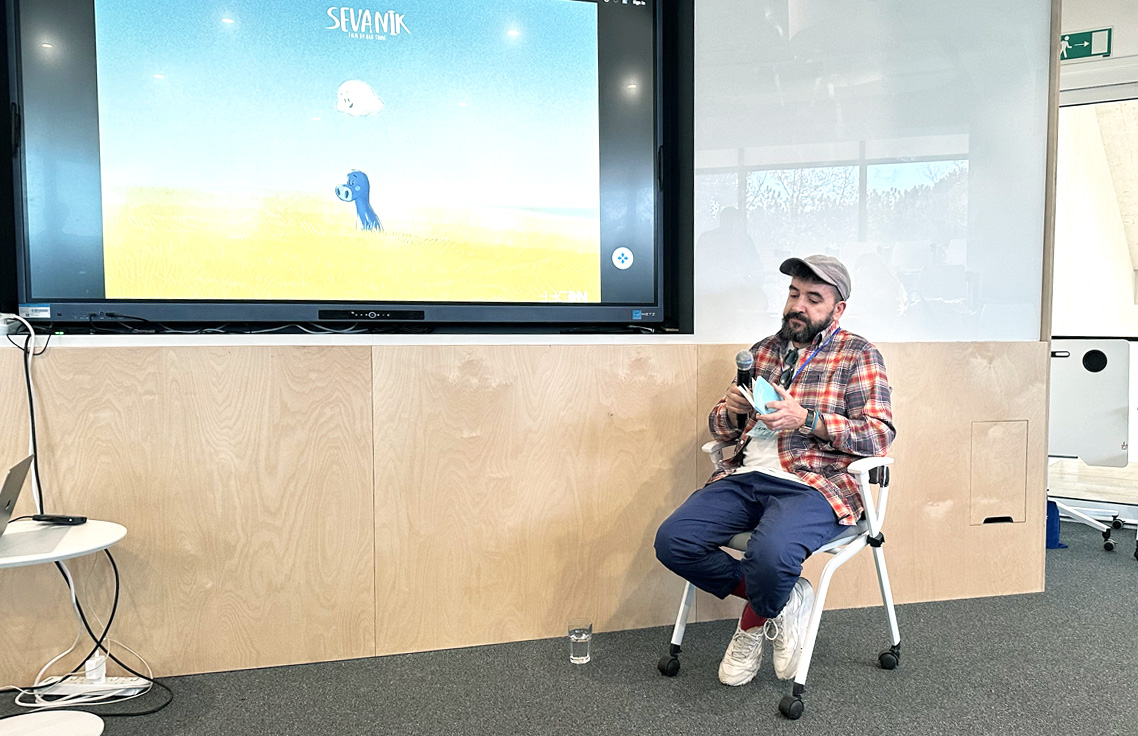
Complementing the theoretical discussions, the school offered hands-on workshops designed to help participants embody the concepts explored. The workshops emphasised imagination as a political act, positioning cultural and artistic practices as vital tools for ecological awareness and community resilience.
Through evaluation sessions summed the participants' perspectives, creating a space to reflect on the school’s topics. Many participants attested the program's opportunity to bring together people from diverse backgrounds and to foster the exchange and circulation of knowledge among them, extending it further into different communities.
With the School of Complex Past, having an environmental focus this year, CSN Lab reaffirms its commitment to addressing the narratives of complex pasts through alternative forms of education. By intertwining theory and experience, the local and the international, the school creates an environment where critical learning, cultural reflection, and collective imagination converge with the aim of shaping more sustainable and just futures.
This year's School of Complex Past was implemented thanks to our partners of "Danish Cultural Institute" and "Womens Fund Armenia".

